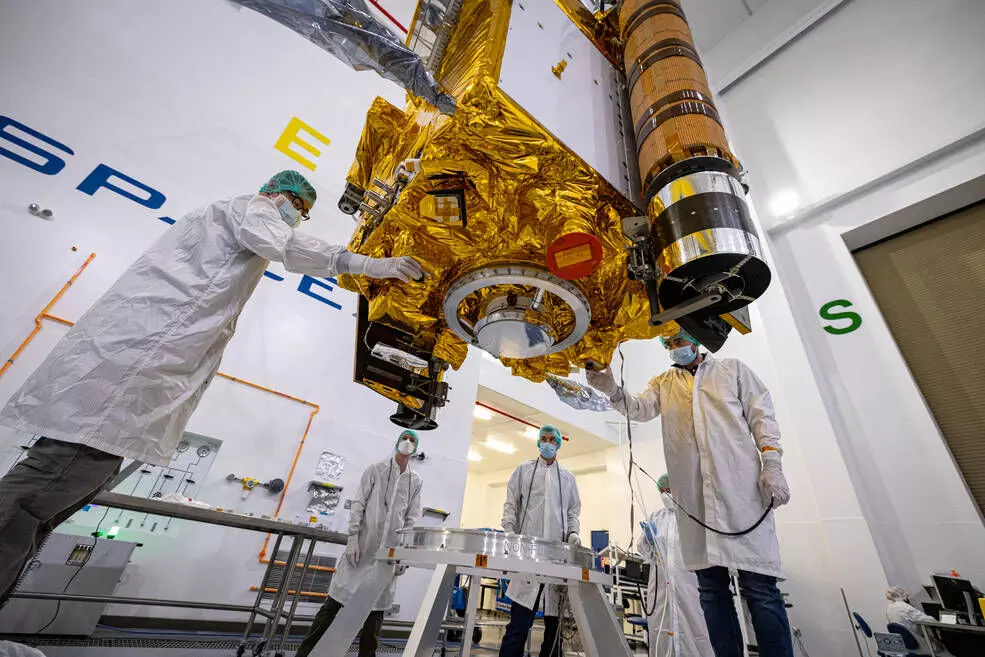
NASA to launch spacecraft to deflect asteroid in first of its kind 'planetary defense' mission
text_fieldsDART spacecraft being loaded onto a dolly (Credit: NASA/John Hopkins)
NASA will launch the first-of-its-kind planetary defense test christened Double Asteroid Redirection Test (DART) on November 23, which will intentionally crash a spacecraft into the moonlet asteroid Dimorphos in an attempt to change its trajectory. Dimorphos, which orbits a larger asteroid named Didymos, poses no threat to Earth.
"DART will be the first demonstration of the 'kinetic impactor' technique in which a spacecraft deliberately collides with a known asteroid at high speed to change the asteroid's motion in space," said Lindley Johnson, NASA's Planetary Defense Officer in a blog post. The results of the test are hoped to provide important data and ideas which will help scientists plan for any even involving a large object on a path to collide with the Earth. The "kinetic impactor" modelling used to understand how the asteroids kinetic energy will be transferred into the impact, shaping the new trajectory of the asteroid will be the focus of the mission and will be measured using Earth telescopes.
DART was built and perfected despite restrictions imposed by the Covid-19 pandemic and will be outfitted with new technology including NASA's NEXT-C ion propulsion system that was designed to improve performance and fuel efficiency for deep-space missions, and a flat, slotted high-gain antenna for efficient communication between Earth and the spacecraft. It will also carry an onboard camera (DRACO), solar sails and the Italian Space Agency's miniature satellite 'LICIACube' to gather data on the impact and its aftermath.
"It's a miracle what this team has accomplished, with all of the obstacles in the way like COVID and the development of so many new technologies," said Elena Adams, DART mission systems engineer at the Johns Hopkins Applied Physics Laboratory (APL) in Laurel, Maryland in the blog post. "But the reason why we succeeded so far is because our team is excited, extremely sharp, and they genuinely want to show that if an asteroid was coming toward Earth, we could prevent a catastrophe."
Starting on Nov. 10, engineers will "mate" the spacecraft to the adapter that stacks on top of the SpaceX Falcon 9 rocket. A day before launch, the rocket will roll out of the hangar and onto the launch pad at Space Launch Complex 4 East (SLC-4E), where it will propel the spacecraft into space and kick off DART's journey to the Didymos system.























